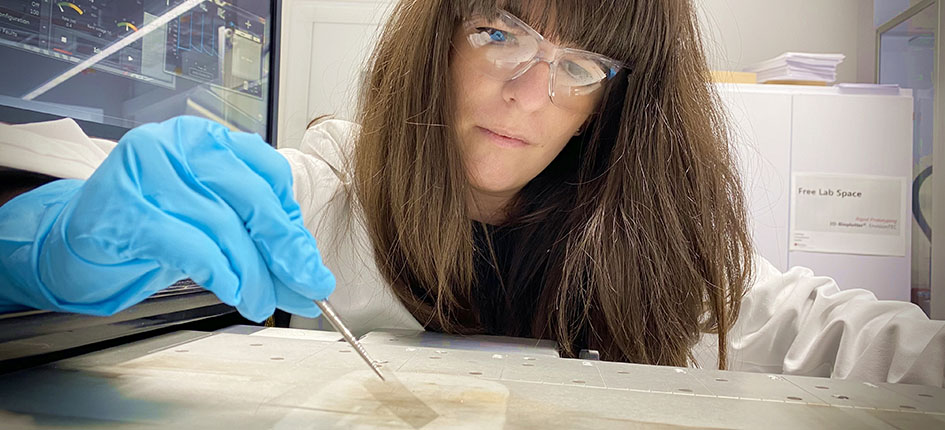
The Laboratory for Thin Films and Photovoltaics at the Swiss Federal Laboratories for Materials Science and Technology (Empa) has developed a transparent film upon which invisible electronic buttons can be printed. In this way, unauthorized persons are unable to identify where to enter access codes to open a door or safe, for example. Only insiders know in which order to press the sensors in order to gain access.
According to a press release, to achieve this, thin-film transistors made from conductive metal oxides function as a sort of secret ink. These are then printed on the transparent security films using highly specialized machines at Empa’s Coating Competence Center.
In a further step, the film and its printed buttons are dyed blue. The blue ink is able to absorb light, which enables the ink to be sintered onto the substrate by way of a high-energy light irradiation process. As a result of this, not only does the blue ink disappear, but the “secret ink” is additionally rendered invisible to the naked eye. “The result is printed circuits that have significantly higher conductivity than previous solutions”, explains Empa researcher Evgeniia Gilshtein, whose initial idea gave rise to this solution.
“What was most important to us was that the film's additive manufacturing process could also be used on an industrial scale”, Gilshtein adds. According to information from Empa in the press release, the invisible door lock is suitable for use in banks and hospitals as well as private homes, for example.
Related news
Meet with an expansion expert
Our services are free of charge and include:
- Introduction to key contacts in industry, academia, and government
- Advice on regulatory framework, taxes, labor, market, and setting up a company
- Custom-made fact-finding visits, including office and co-working space